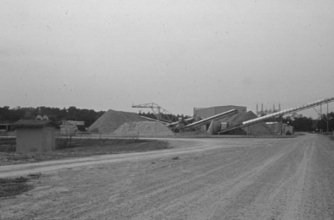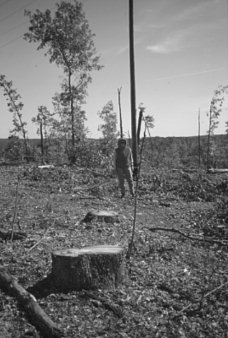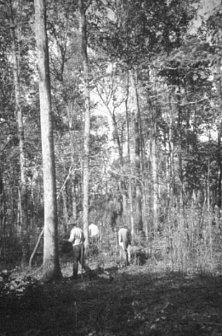With all the turmoil created by the two chip mills built in the southeastern Ozarks, the best way to form an opinion is to make a personal visit. That's what the Missouri Chapter Society of American Foresters and others did last fall.
A two-day gathering in Van Buren, Mo. and a visit to the Willamette chip mill in Mill Springs, Mo. may have posed more questions than it answered. But it was a start. A start on determining if chip mill operations have a place on the Missouri forest scene.
Chip mills, which utilize low-grade hardwood timber to produce fiber for the paper industry, have been roundly criticized by the environmental community. Environmentalists fear that the mills will cause clear-cutting of forests in an area 50 or more miles surrounding the mills.
Proponents of the mills believe they create a market for low-quality trees that otherwise would go to waste.

Some environmental groups foresee only the worst consequences with large-scale soil erosion, stream degradation and loss of wildlife habitat.
Many professional foresters and landowners who are actively managing their trees see it as a very helpful tool in creating highly improved forests that increase in value, both commercially and aesthetically. With a market incentive to remove the poor quality trees and leave the better crop trees, the landowners have an opportunity for sustainable management.
Who's right? Both, probably. In the end it will be up to the landowners and how well informed they are about management practices that will give them an income and keep a healthy forest on their land.
During the two-day meeting a small group took a tour of several harvested areas where the timber went to one of the two chip mills. They saw the good and the bad. One area was almost totally cutover. However, there was a corridor of trees left around the perimeter to slow erosion. Without knowledge of what the timber stand was composed of before the harvest, it was generally agreed that the harvesting practices left something to be desired. It could not be determined after the harvest just how many of the larger trees would not have been worth keeping because of fire damage, hollow butt logs or other faults.
On another harvested area consulting forester Doug Enyeart proudly showed the results of a selective cut. In this case the forester marked the poor quality trees for cutting and the result was a timber stand that obviously would be quite valuable in the future.


To make this type of harvest, the landowner had to understand that he was foregoing some immediate income for more in the future. It also required a well thought-out contract with the loggers and supervision by the landowner's consulting forester.
From these site visits, there is no doubt that Missouri forest landowners have the management techniques and the technical advisors available to accomplish sustainable forestry that most everyone would be proud of.
